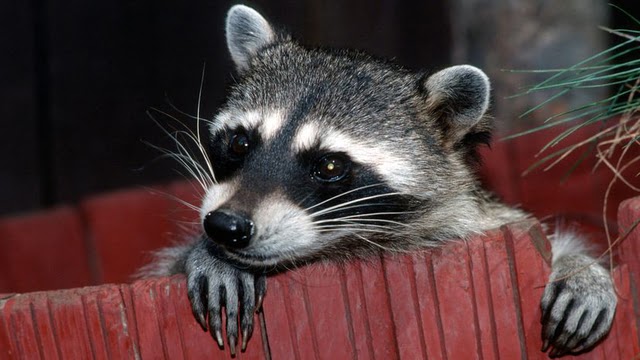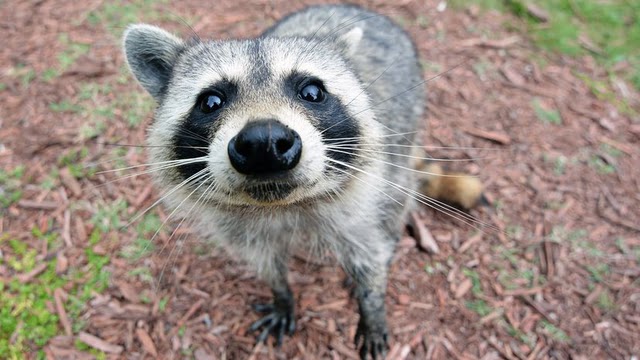Quck answer
Raccoons are highly adaptable animals that have successfully made their way into urban environments. They are known for their intelligence and problem-solving skills, which have helped them thrive in cities across North America. Raccoons are omnivores that will eat just about anything, making them well-suited to scavenging in urban areas. They have also been known to use tools, such as using rocks to break open clams and using their paws to open doors and garbage cans. Despite their success in urban areas, raccoons can also pose a nuisance to humans by causing property damage and spreading diseases.
Wild Animals

Raccoons have become prolific in cities all around North America. Rhonda Stansberry/Getty Images
Most people would only know raccoons as animals they sometimes see crossing the road. However, there is more to these creatures than their distinctive markings. Raccoons are everywhere, with the Northern or common raccoon (Procyon lotor) being native to North America and also found in Central America, Europe, and Japan. These resourceful and adaptable creatures thrive in cities, with the raccoon population now greater in urban and suburban areas than in rural ones. However, raccoons also live in forests, farmland, marshes, prairies, and the tropics.
Raccoons’ Physical Characteristics
Raccoons have brownish-gray fur that is dense enough to insulate them during the winter, with darker masks and tail rings. These markings are believed to reduce glare when the raccoons are out foraging at night. They have a hunched appearance due to their hind legs being longer than their front legs. Weighing between 4 and 23 pounds (1.8 to 10.4 kilograms), raccoons are 23 to 37 inches (0.58 to 0.93 meters) long. Males are bigger than females, with males called “boars” and females referred to as “sows.” Raccoons’ front paws have five toes that act like fingers, allowing them to hold and manipulate objects, including food, doorknobs, handles, and jars.

Raccoons’ front toes act like fingers, helping them manipulate objects, climb trees and fences, and hold and eat food. Wikimedia
Raccoons’ Social Habits and Mating
Raccoons mate in January, with females ready to mate by the time they are a year old. After a 63-day gestation period, sows give birth to between one and seven kits. Newborns are weaned between seven and 16 weeks and spend around two months in the den. When they are 12 weeks old, the kits will roam from home and stay out for a night or longer. Male raccoons are polygamous and do not help raise their kits, while females are monogamous. Raccoon mothers prefer to raise their young alone, and a group of females or males is called a nursery. Scientists have discovered that raccoons of the same sex like to stay together. Raccoons in the wild live for two to three years on average, with cars posing the biggest threat to their survival, especially as their population spreads into urban areas. Other threats include foxes, coyotes, bobcats, and cougars, which prey on them.
Adaptable and Resourceful Raccoons
Raccoons have a varied diet and can eat both meat and vegetables, including vertebrates and invertebrates. They are skilled hunters and can catch frogs, crawfish, and rodents. Raccoons are also adept at picking berries and insects from trees and scavenging food from dumpsters.
These animals are excellent climbers and swimmers and can run up to 15 miles per hour. They can also fall from heights of up to 40 feet without being injured. Raccoons are not picky about their den locations and will make a home in trees, logs, brush piles, attics, or abandoned buildings.
In preparation for winter, raccoons store up fat by consuming large amounts of food during the spring and summer. While they do not hibernate, they become sedentary during harsh winter weather and can lose up to half their body weight during this time.

Cute but Dangerous Raccoons
Raccoons may appear cute and friendly, but they can be aggressive if they feel threatened. It is not recommended to have a pet raccoon or approach one in the wild. Raccoons can also carry diseases such as rabies, roundworms, and leptospirosis that can be transmitted to humans.
Despite their tendency to scavenge for food, raccoons are actually quite clean and will often wash their food in streams and dig latrines in their den locations.
FAQ
1. What are raccoons?
Raccoons are small mammals that belong to the Procyonidae family. They are known for their black mask-like markings around their eyes and their bushy tails. They are found throughout North and Central America and are common in urban areas.
2. Why are raccoons considered urban survivors?
Raccoons are considered urban survivors because they have adapted well to living in cities. They are able to find food and shelter in urban areas and have learned to avoid humans and their pets. They are also able to use their intelligence to outsmart humans and adapt to changes in their environment.
3. What do raccoons eat?
Raccoons are omnivores and will eat almost anything. Their diet includes fruits, nuts, insects, small animals, and garbage. In urban areas, they often scavenge for food in trash cans and dumpsters.
4. Are raccoons dangerous?
Raccoons are usually not dangerous to humans unless they feel threatened or cornered. They can carry diseases such as rabies, so it is important to avoid contact with them. If you encounter a raccoon, it is best to give it space and let it move away on its own.
5. Can raccoons be kept as pets?
In most places, it is illegal to keep raccoons as pets. They are wild animals and do not make good pets. In addition, they can carry diseases and become aggressive as they get older.
6. How do raccoons communicate?
Raccoons communicate with each other through a variety of sounds, including chirps, growls, and screams. They also use body language, such as raising their tails or standing on their hind legs, to communicate with each other.
7. How smart are raccoons?
Raccoons are very smart animals. They are able to solve puzzles and remember solutions for future use. They have also been observed using tools, such as using sticks to retrieve food from hard-to-reach places.
8. How long do raccoons live?
Raccoons have an average lifespan of 2-3 years in the wild, but can live up to 20 years in captivity.
9. How do raccoons mate?
Raccoons mate in late winter or early spring. The male will court the female with various calls and displays. Once they have mated, the female will give birth to a litter of 3-5 kits after a gestation period of 60-73 days.
10. Do raccoons hibernate?
Raccoons do not hibernate, but they may enter a state of torpor during extreme cold or food scarcity. During torpor, their body temperature and metabolism decrease, allowing them to conserve energy.
11. How do raccoons adapt to urban environments?
Raccoons are able to adapt to urban environments by using their intelligence and resourcefulness. They are able to find food and shelter in cities and have learned to avoid humans and their pets. They are also able to use their problem-solving skills to adapt to changes in their environment.
12. Are raccoons protected by law?
Raccoons are not protected by federal law, but they may be protected by state or local laws. It is important to check local regulations before trapping or removing raccoons from your property.





Leave a Reply